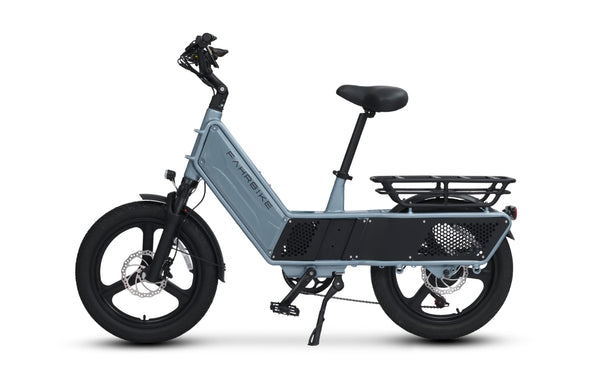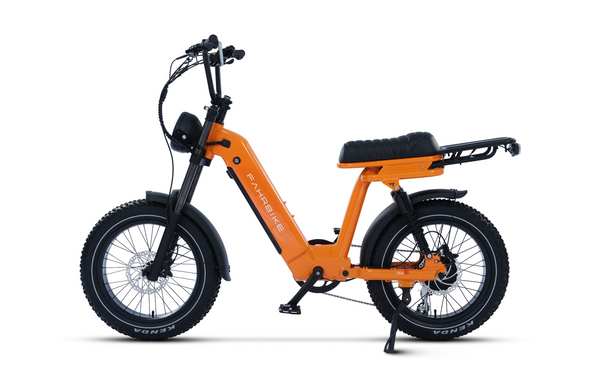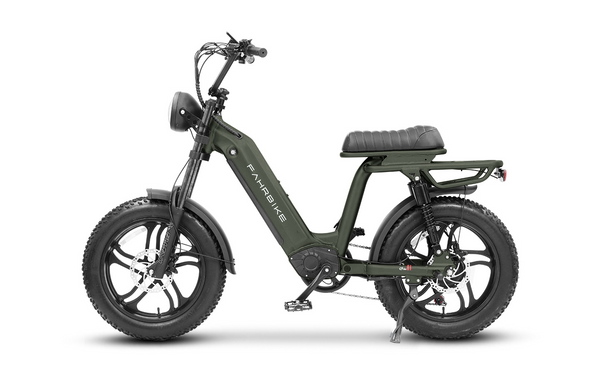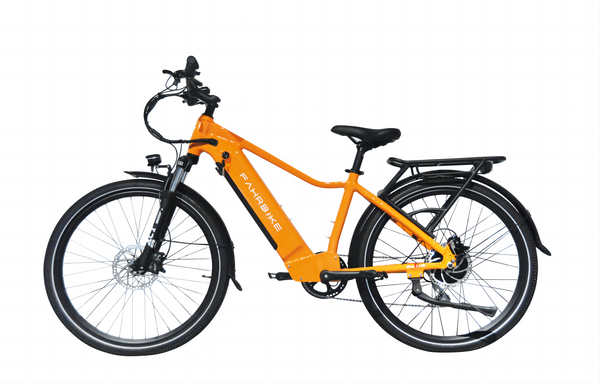Electric bikes have revolutionized the way people travel and commute, providing an efficient and eco-friendly alternative to traditional transportation methods. With the rise of electric bikes, new technologies have emerged to enhance the riding experience, including torque sensors and cadence sensors. While both sensors offer advantages and disadvantages, there are key differences that riders should consider when choosing which type of sensor to use.
What Are Cadence Sensors ?
When making the choice between a cadence sensor vs torque sensor, you should ask yourself this question: am I looking for an ebike with a pedal mode that does the majority of the work for me? If so, an ebike cadence sensor might be the model that best fits your needs.
The majority of cadence-based pedal assist systems engage an electric bike’s motor when a rider begins to pedal. To explain it simply, when the sensor detects any form of movement from the pedals (while PAS is turned on), it sends a signal to the motor to start working. The motor then prescribes a set amount of power to move the rider forward.
The amount of effort a rider puts into pedaling and the selected pedal assist level will influence the amount of power the motor contributes. On cadence-based pedal assist systems, manufacturers typically have predetermined and preset speeds per each level of pedal assist. As a rider’s pedal cadence increases, the motor will continue to output until it reaches that predefined threshold, maintaining it as necessary amid varying terrains, gear levels, and the rider’s ongoing pedal cadence. In short:
- As the rider’s pedaling speed (i.e. their cadence) increases, the pedal-assist will reduce the motor’s output (i.e. power contribution).
- As a rider’s pedaling speed decreases, PAS will increase the motor’s output to propel the rider forward.
Advantages of Cadence Sensors:
Simple to Install
Cadence sensors are easy to install, requiring only a few basic tools and a few minutes of work. They are generally mounted on the bike's frame or pedal spindle, and then paired with the electric motor via a wireless or wired connection.
Cost-Effective
Cadence sensors are generally less expensive than other types of sensors, such as torque sensors. This can make them a good choice for riders on a budget who still want to enjoy the benefits of electric bike assistance.
Energy Efficiency
Cadence sensors can help conserve battery power by adjusting the level of assistance based on the rider's pedaling speed. This means that the bike can provide the right level of assistance without using excess energy, which can extend the battery life and allow for longer rides.
Disadvantages of Cadence Sensors:
Lack of Precision
Cadence sensors may not be as precise or accurate as other types of sensors, such as torque sensors or GPS-based speed sensors. This can result in a less responsive or less natural feeling of assistance from the electric motor.
Limited Input
Cadence sensors only measure the speed at which the rider is pedaling, and do not take into account the force or pressure applied to the pedals. This can result in a less personalized level of assistance that may not be optimized for the rider's unique needs and preferences.
Limited Compatibility
Cadence sensors may not be compatible with all types of electric bike motors or controllers. Riders should make sure that their chosen sensor is compatible with their specific bike model before purchasing.
What Are Torque Sensors ?
A torque sensor uses a precise strain gauge to determine and monitor how hard you pedal. This gauge measures the pedal pressure you exert and sends a signal to the e-control bike's system. Then, the control unit uses this information to calculate the level of power the motor needs to supply based on the force you apply while peddling.
Thus, it means that the more you pedal your motor, the more it absorbs energy. Also, the less pressure you put on the pedals, the power declines automatically at the same rate. In the same way, the power also goes off when you stop pedaling. The Fahrbike Terra electric bike with an excellent torque sensor can also sample your pedaling force up to 1000 times per second, allowing the device to alter the pedaling power as it fluctuates quickly and instantly.
Furthermore, this pedal-assist system intensifies your pedal input to produce an equivalent output. The majority of ebikes have diverse pedal assist settings. The lowest setting, also called the 'eco-mode,’ may increase your pedaling force by 50%, while the highest setting or 'performance mode' can boost your pedaling strength by 300%.
Advantages of Torque Sensors:
Precision
Torque sensors are highly precise and accurate in measuring the force applied by the rider to the pedals. This results in a highly responsive and natural riding experience, with the electric motor providing assistance in real-time based on the rider's input.
Personalization
Torque sensors provide a highly personalized level of assistance that can be optimized for the rider's unique needs and preferences. This means that the bike can provide the right level of assistance based on the rider's pedaling force and riding style.
Durability
Torque sensors are typically more durable and long-lasting than other types of sensors, such as cadence sensors. This is because they are designed to withstand high levels of stress and pressure.
Disadvantages of Torque Sensors:
High Cost
Torque sensors are generally more expensive than other types of sensors, such as cadence sensors. This can make them a less accessible option for riders on a budget.
Installation
Torque sensors can be more difficult to install than other types of sensors, such as cadence sensors. This is because they require more complex wiring and may need to be calibrated to the specific bike and motor.
Power Consumption
Torque sensors may use more battery power than other types of sensors, such as cadence sensors. This is because they require more energy to measure the force applied by the rider to the pedals.
Conclusion
A torque sensor is generally considered to provide a more natural and responsive riding experience, while a cadence sensor may be less expensive and simpler to implement. However, the choice between the two ultimately depends on the specific needs and preferences.





